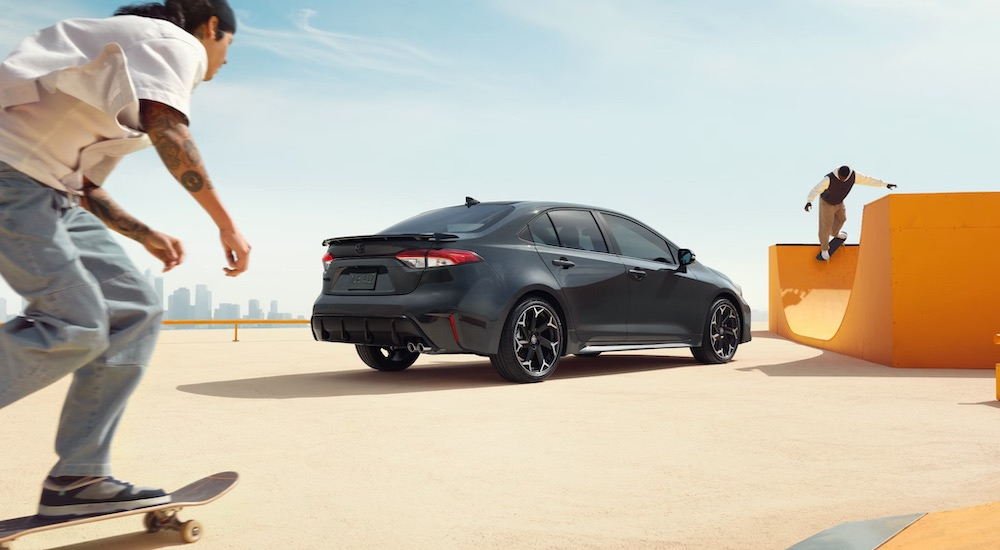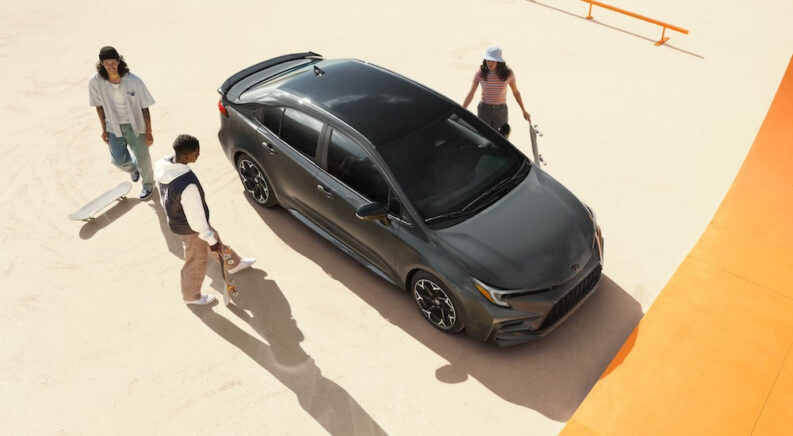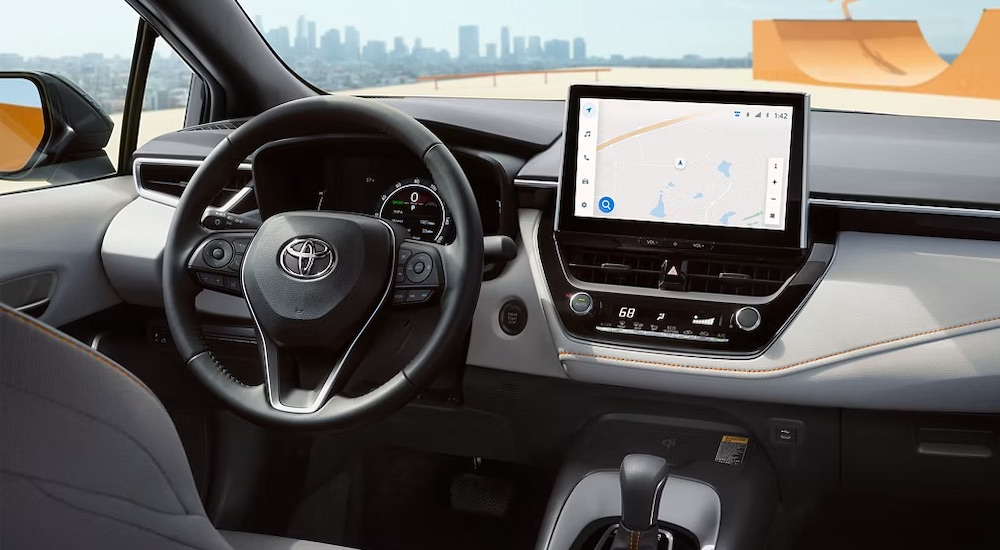There’s been a lot of buzz surrounding the Toyota Corolla and its new GR (Gazoo Racing) variant, which turns the classic commuter car into a wild all-wheel drive rally car. However, veteran car enthusiasts know it’s not the first time Toyota has decided to throw caution to the wind with its venerable nameplate. Several special-edition Corollas have raised eyebrows over the decades, from the 1972-74 TE27 fastback coupe to the 2005-06 Corolla XRS.
One of the most memorable yet oft-forgotten is the Toyota Corolla FX16. Its late-1980s run was short but sweet, as this FWD hatchback set the tone for future hot hatch models. When people walked into a dealership to find a Toyota Corolla for sale, they were greeted by a hot little car that brought Toyota compacts into a new era. I’ve even read serious claims that the Corolla FX16 is the true forefather of the new GR Corolla.
Toyota understands the significance of the FX16, and it recently announced a new Corolla trim to pay tribute to its legacy. The arrival of the 2025 Corolla FX Special Edition is a perfect opportunity to look back on the story of the Corolla FX16. Why was this hatchback such a big deal, and how does the new Corolla FX pay it forward? Join me for this dive into the FX16 legacy.
A New Take on an Iconic 1980s Coupe
Before anything else, it’s important to know the Toyota Corolla FX16 didn’t come out of the blue. The Toyota AE86 GT-S debuted in 1984 and is one of the most revered Toyotas ever made. This RWD coupe shared a 4A-GE 1.6L four-cylinder engine with the Toyota MR2, featuring a twin-cam design that was rare for compacts of the time. Although the 112 hp and 97 lb-ft of torque were relatively pedestrian even by 1980s standards, it was packed in a lightweight RWD car for an amazing power-to-weight ratio. You could launch the AE86 GT-S around a corner and even throw it into a drift—plus, there was a relatively spacious cabin. Perhaps biggest of all, the AE86 GT-S was a dream for aftermarket modifications, letting people customize them to their hearts’ content.
The AE86 was huge in the mid-1980s, featured in Japanese comic books, an arcade game, and even an animated series. As the decade rolled on, though, a higher-level decision was made to start transitioning Toyota’s compact cars from RWD to FWD. The result of the tinkering was the Toyota Corolla FX16, the next generation of three-door hot hatch that began production in late 1986. Interestingly, as part of the RWD-to-FWD transition, the FX16 and AE86 GT-S were both sold in the 1987 model year, giving sport compact fans a choice when they headed to showrooms.

How the FX16 Built on the AE86
I’ll start with the obvious point: with the Corolla FX16 going to FWD, drifting was no longer an option (the dirty little secret is that, unless you did extensive modding, the AE86 GT-S was never as good a drifter as was portrayed in shows and comics). Beyond that, the FX16 was everything you’d expect when sportiness meets practicality. While all the parts and pieces were straightforward, Toyota engineered and assembled them to offer a great driving experience with a moderate price tag.
The FX16 used the same 1.6L engine as the AE86, making 108 hp––four less than the RWD model because the FWD car had a slightly smaller engine compartment that required some adjustments. You could get the FX16 up to 7,500 RPM, and with the unmatched Toyota gearboxes of the time, shifting was amazingly precise. There was a choice of a five-speed manual or a four-speed automatic, and the automatic had a groundbreaking-at-the-time button to change the shift points depending on whether you wanted efficiency or performance.
As for the chassis and suspension, the FX16 had everything that people take for granted today but was impressive in the 1980s, including four-wheel vented disc brakes, high-quality struts, strong anti-roll bars, and a variety of added bracing to limit flex. Toyota switched to Goodyear Eagle GT tires for the FX16, one of the era’s premium street options. Inside, owners got 1980s treats like an adjustable steering wheel column, in-door storage bins, lots of headroom, and a leather steering wheel cover on the GT-S trim. The added storage from the hatchback design goes into the “useful” column. The Corolla FX16 wasn’t going to win any luxury awards, but it was big on offering thrills while still being comfortable and practical for everyday use—exactly what the modern GR Corolla aims to achieve.
Why Didn’t the FX16 Last?
Unfortunately, the Toyota Corolla FX16 was a fleeting entry into the hot hatch scene. It only lasted until 1988, before Toyota pulled the plug. So what happened? Part of it was surely Toyota being on its way to the sixth generation of Corollas. The AE86 GT-S and FX16 were both based on the fifth-gen E80, and with the sixth-gen E90 vehicles rolling out for the 1988 model year, it was only a matter of time before they phased out the E80 platform.
However, Toyota could have made a next-gen FX16 if it wanted to. Why didn’t it? As far as I can tell, it came down to two factors. One was Toyota shifting its focus to more mainstream “moderate sport” models, such as the AE92 Corolla Sport GT-S. The other was competitors like Honda and Volkswagen upping their game. Honda introduced the Civic Si in 1986, and VW made strides with machines like the Golf GTI, squeezing the FX16 out. Unlike the AE86 GT-S, the FX16 didn’t have a big second life on the customization market, either, making it a rare find these days.
Unboxing the 2025 Corolla FX
After nearly 40 years, though, Toyota is renewing the FX name with a special edition based on the Corolla SE trim. Based on a first look, it appears Corolla has taken a more 21st-century approach to sportiness. The engine remains the same as the regular SE—though at 169 hp and 151 lb-ft of torque, you can see how far “ordinary” power has come. However, Toyota used lowering springs to improve the center of gravity, handle aggressive driving, and get the most out of the independent front suspension. It has also tweaked the power steering to help with responsiveness. With a black rear spoiler, 18-inch satin black alloy wheels, and blackout accents, it looks like a car ready for action.
More interesting is that while the original FX16 stuck to the basics for the interior, Toyota is using the Corolla FX to break out its latest in-vehicle technology and comfort. It boosts the standard multimedia touchscreen to 10.5 inches for your on-the-go entertainment and navigation, and drivers also receive a seven-inch digital gauge display, a Smart Key system, a wireless smartphone charger, and sport fabric upholstery. It’s a different take on being edgy but one that drivers of the 2020s who focus on style and comfort will appreciate.
The FX Lives On
Spirited yet practical, the Toyota Corolla FX16 will always hold a place as one of the original hot hatchbacks, helping spawn everything from the Honda Civic Type R to the Ford Fiesta ST. As I mentioned, the original is hard to find––but if you can, it’s worth taking for a retro spin. For present-day pilots, the Toyota Corolla FX will give you a taste of its influence on the intersection of everyday driving and high-octane wonder.





